
BY Sara Laux, Colin Czerneda & Jesse Dorey
June 28, 2023
Uncovering ancient Italy’s buried history
At two active dig sites in Italy — Metaponto, located in the Basilicata region, and the Villa di Tito, just north of Rome — McMaster Greek & Roman Studies students on a field practicum are joining researchers in digging up the long-buried secrets of these ancient civilizations alongside their colleagues from St. Mary’s University in Halifax.

A trip to the past with the Metaponto Archaeology Project
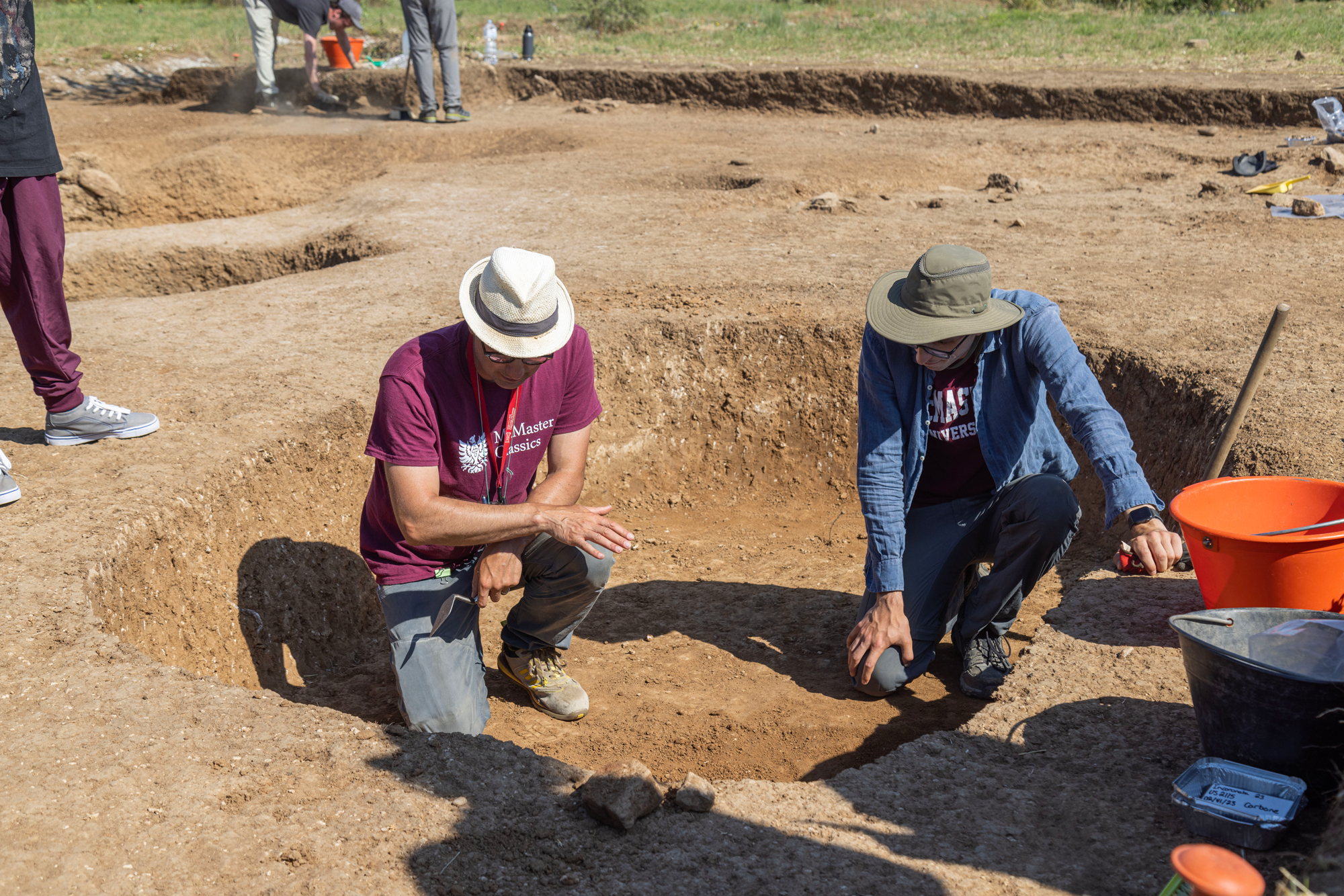
The Metaponto Archaeological Project is nothing short of a collection of puzzles.
There are the brain teasers: How did the Greek settlers of the 8th and 7th centuries BCE interact with the indigenous Oenotrian population? And why was the dig site, an Oenotrian settlement now known as Incoronata Greca, abandoned?
The logic questions: If things that look like offerings have been found, should there be a temple nearby?
And then there are the literal jigsaw puzzles: How do those pottery sherds fit together, anyway? Are they pieces of an amphora, or a skyphos? Are they actually Greek, or do they just look Greek?
Slowly, slowly, the picture is starting to take shape.
Spend a few days with the McMaster team in A trip to the past with the Metaponto Archaeology Project.

Solving a puzzle 3,000 years in the making
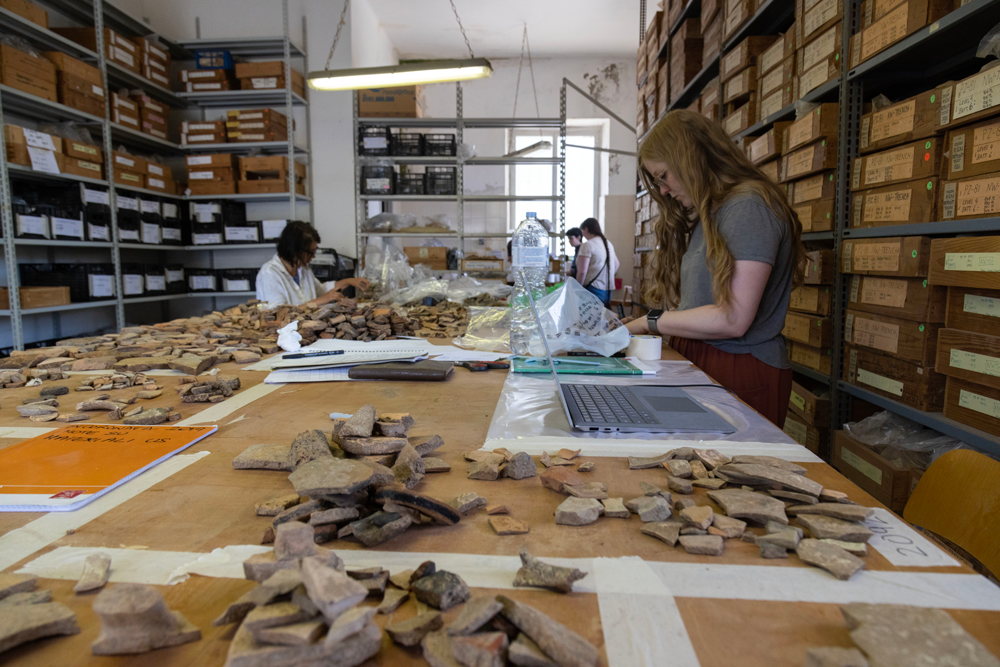
The Metaponto Archaeological Project is not only bringing the history of ancient civilizations to light—it’s also training the next generation of archaeological leaders.
For McMaster PhD candidate Eric Del Fabbro, participating in the Metaponto Archaeological Project between his undergraduate and master’s degree got him hooked on the material culture of the Oenotrians. He’s now researching black glaze pottery produced around Metaponto, and working on reconstructing the city’s expansion outside the city centre.
“We’ve found some pretty amazing pottery this year, both Oenotrian and Greek. I particularly liked a little Corinthian aryballos, which was a container for perfume. There’s also been some indigenous ceramics, including a very large container with cool handles that are functional but also very decorative,” he says.
“It’s tremendously exciting and kind of frightening when you unearth something – that’s why I’m here every day.”
The site itself almost feels like a sentient thing, and the work the team is doing is the payment for learning its stories.
“This spot is teasing us – every time we think we’re done and have found all we can find, it throws up something interesting,” says a wry Marshall Zuckerman, a master’s student in Greek and Roman studies at McMaster. “There are pits in pits!”
Interested in learning more about the students who are helping solve the historical puzzles of Metaponto? Check out the story McMaster students set out to solve a puzzle 3,000 years in the making.

From McMaster to Metaponto
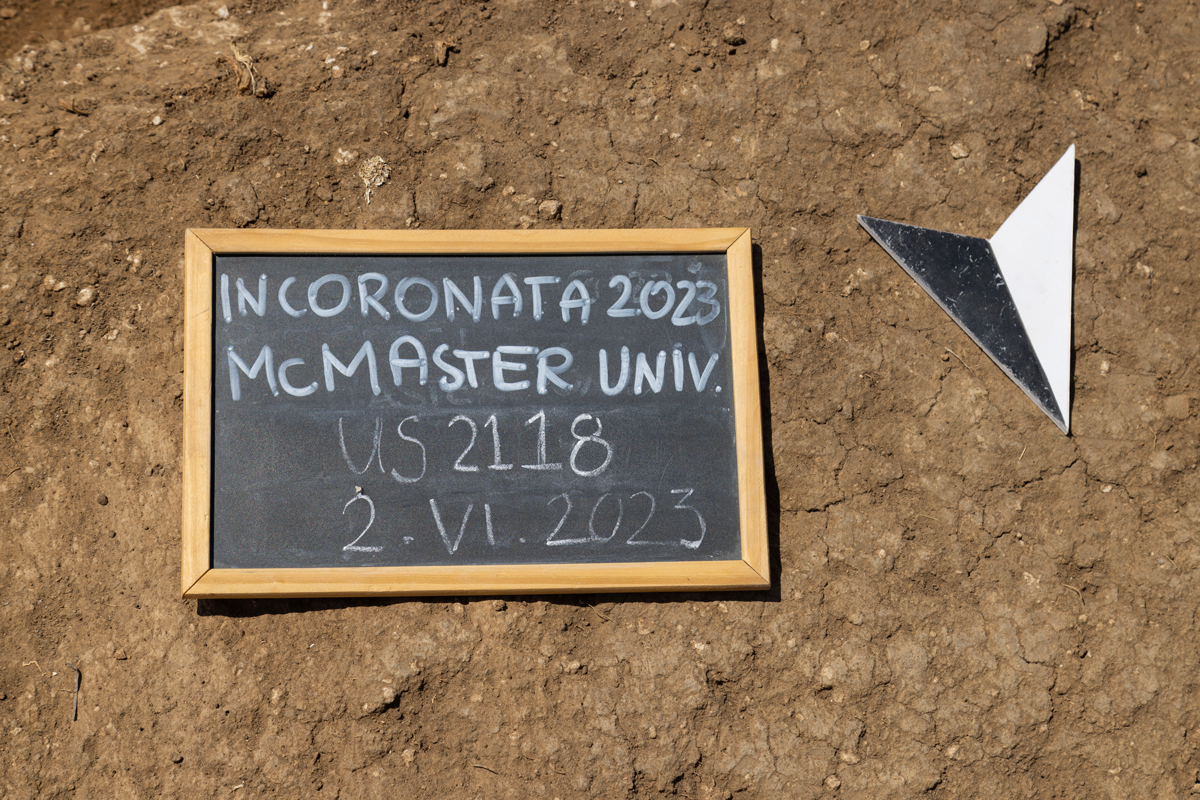
In the early 8th century BCE, the area around the modern-day town of Pisticci, Italy, was home to Metaponto, an ancient Greek colony rich in history. Located in the Basilicata region, in the arch of Italy’s boot, this rural location offers a wealth of sites that shed light on the lives of the Greek colonists — and the people they encountered.
Since 2017, a group of students and researchers, co-led by McMaster professor Spencer Pope and St. Mary’s professor Sveva Savelli, has been uncovering the secrets of how Greek colonies were established and expanded, and how they interacted with indigenous populations in the area.
Want to learn more about the history of Metaponto and McMaster’s role in helping to tell it? Check out the story From McMaster to Metaponto: What decades of research has unearthed about ancient Italy.
Interesting in learning more about ancient Italy? Check out the earlier stories, Unearthing Greek settlements in Italy, Return to Metaponto, and Piecing together the rich history of the ancient city of Metaponto.

Hands-on learning: An adventure for the ages
A few weeks ago, McMaster Humanities graduate Bronwyn Hathaway uncovered a nearly 2,000-year-old coin at an archaeological dig in Italy’s Velino Valley.
For Hathaway and a few other McMaster undergrads, ancient history is more than just information in a textbook or on a screen — it’s all around them, waiting to be discovered.
Co-led by McMaster professor Martin Beckmann and professor Myles McCallum from St. Mary’s, the Villa di Tito archaeological project provides undergraduate students with the opportunity to spend part of their summer excavating a real, active dig site.
Learn more about the Department of Greek & Roman Studies archaeological field practicum here
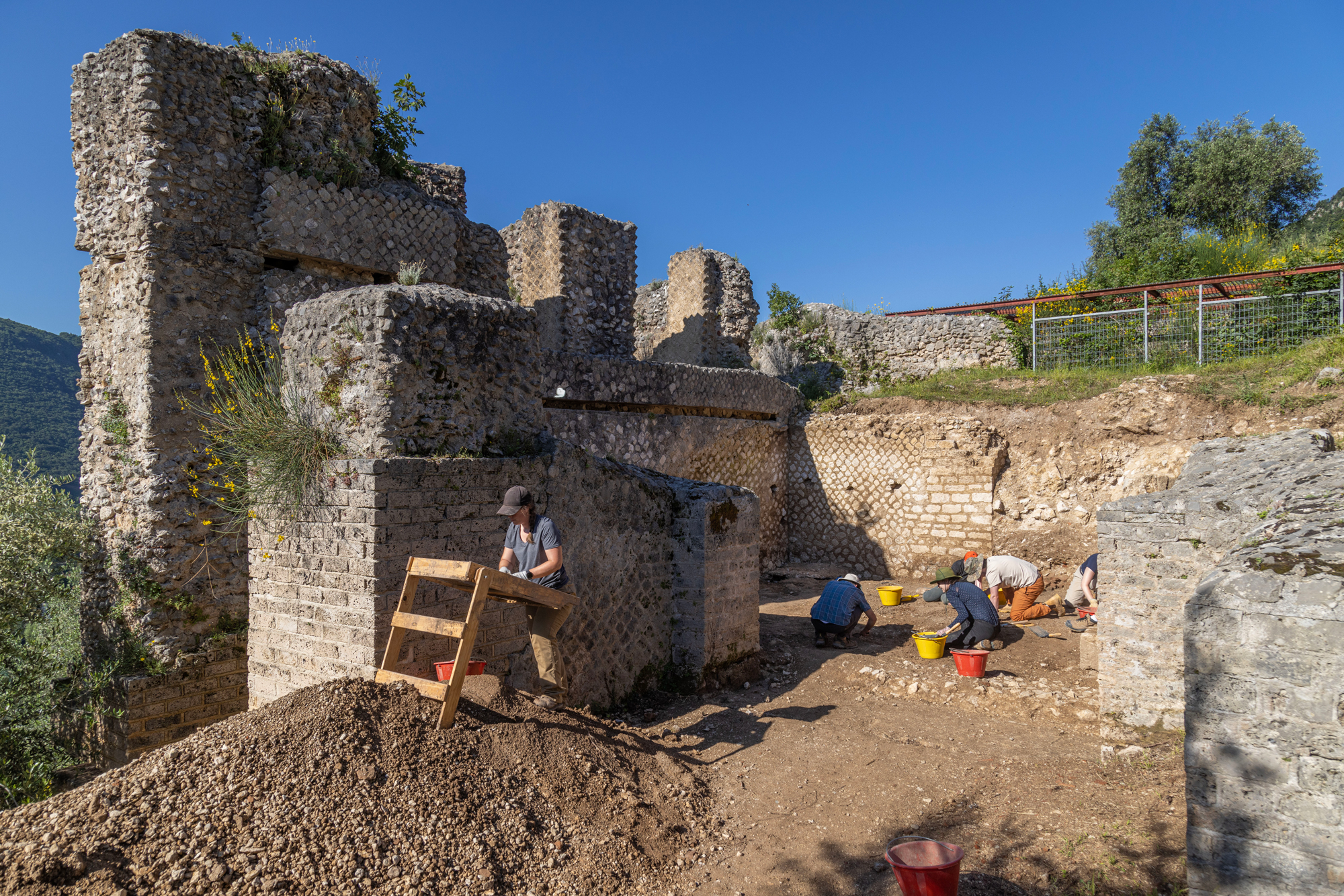
The dig site is home to a complex of structures dating back to the early first century CE and hold important clues to contemporary life in the region.
Though no one definitively knows who owned the villa — local tradition says it was once the home of Titus, the eldest son of the emperor Vespasian — researchers believe that their work at Villa di Tito can shed light on the lives of the labourers, servants and slaves who made life at the villa run smoothly for its elite occupants.
Here’s what two McMaster students at the dig have to say about it
 Bronwyn Hathaway | Graduate; Department of Greek and Roman Studies & Art History
Bronwyn Hathaway | Graduate; Department of Greek and Roman Studies & Art History
Why she got involved
After the pandemic, I had a hard time defining my undergrad experience, and I really wanted a chance to connect with what I was studying. Beyond the interesting nature of the dig and getting to work with the great professors here at McMaster, this project really gives me the chance to exercise the skills I’ve learned throughout my undergrad.
How it feels
The chance to hold an object that hasn’t been touched by human hands for thousands of years is the most incredible opportunity. Last Friday, I pulled up a coin from the Claudian era (41 – 54 CE). It’s surreal to be the first hands to have held it in such a long time.
I feel really privileged, and I’m excited to be one of the lucky ones.
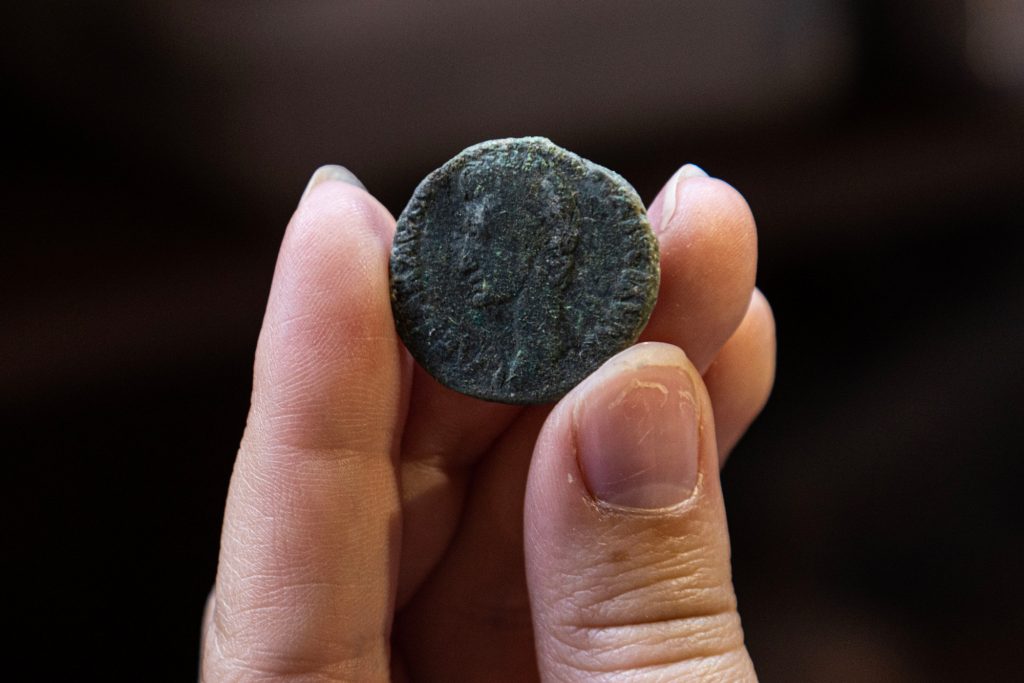
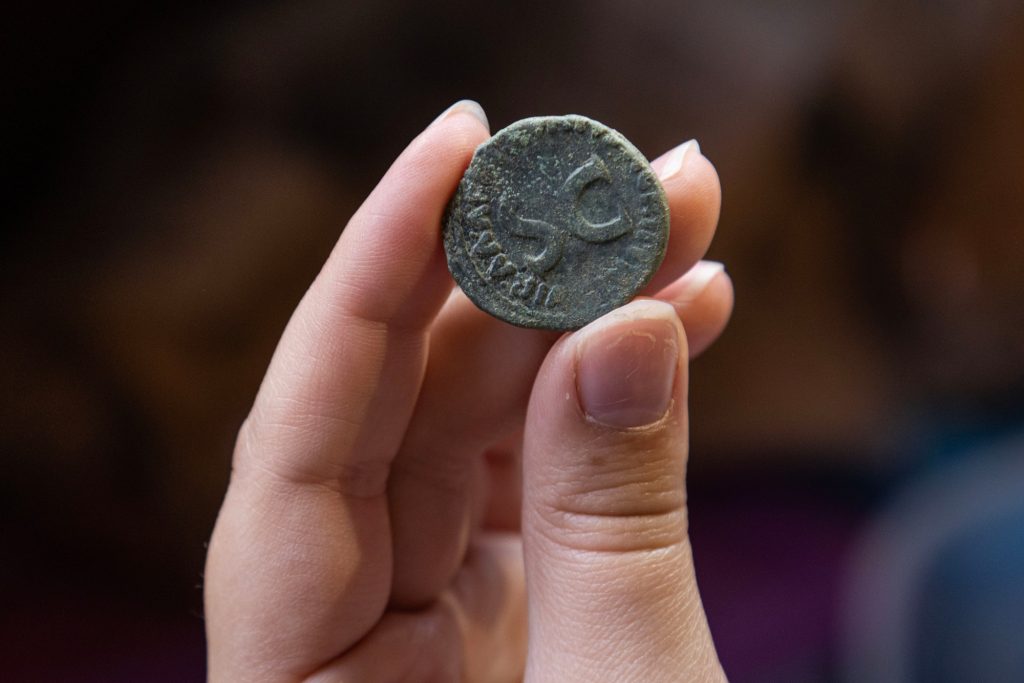
What she does
I’m primarily focused on the cryptoporticus area of the villa, which is basically the basement. This is a very important part of the villa because it would’ve been where the slaves or workers of the villa would congregate and do their work.
What she wants students to know
If I had one piece of advice for students looking to participate in a project like this in the future, I would say, and it seems like the most obvious piece of advice ever, but just go for it. My only regret is not doing it sooner, so be like me and just put yourself out there.
 Andrew Melo | Undergraduate student | Department of Greek and Roman Studies
Andrew Melo | Undergraduate student | Department of Greek and Roman Studies
Why he got involved
When I was a little kid, I watched documentaries — stuff on excavations and digging up old history. That stuff got me into history, and I never thought I would really be able to do that. When the opportunity came up, I had to do it.
How it feels
It’s a dream come true.
Being able to participate in this kind of research as an undergrad is incredible. When I learned that I was going to be a part of this trip, I was so giddy because this is not a typical thing that you get to do as an undergrad. The fact that I get to do something that I really wanted to do ever since I was a little kid — study history and be on site — is unbelievable, and I‘m so excited.
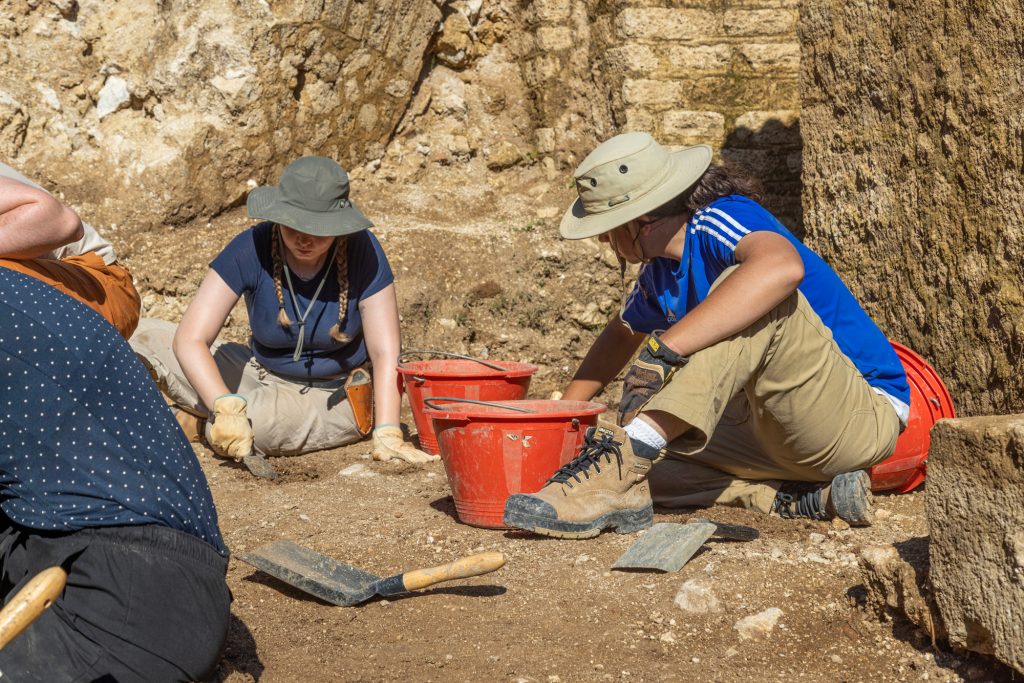
What he’s found
I found a lot of fine pottery with some designs on the outside so far, but my best find was a coin. That’s what I wanted to find. I wasn’t sure if I was going to, but when I pulled it out of the ground, I was like, “Is that really…?” It was unbelievable.
Why we should study ancient history
When we look through history of any kind, especially the ancient stuff, we can forget that there were real people that were there. People who lived individual lives, with their own hopes, their own dreams. This work is giving those people as much of a voice as you can just by studying their day-to-day lives.

